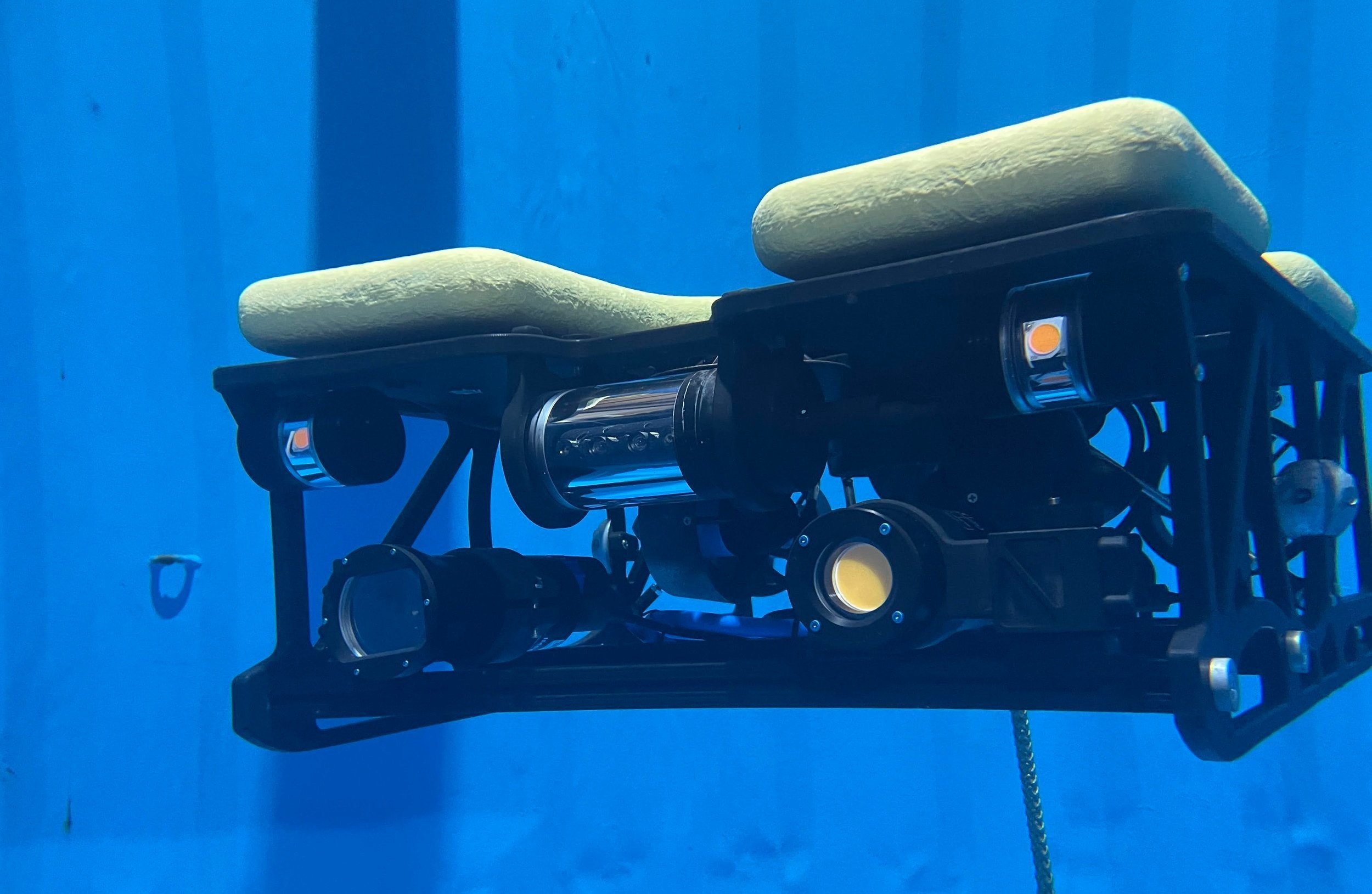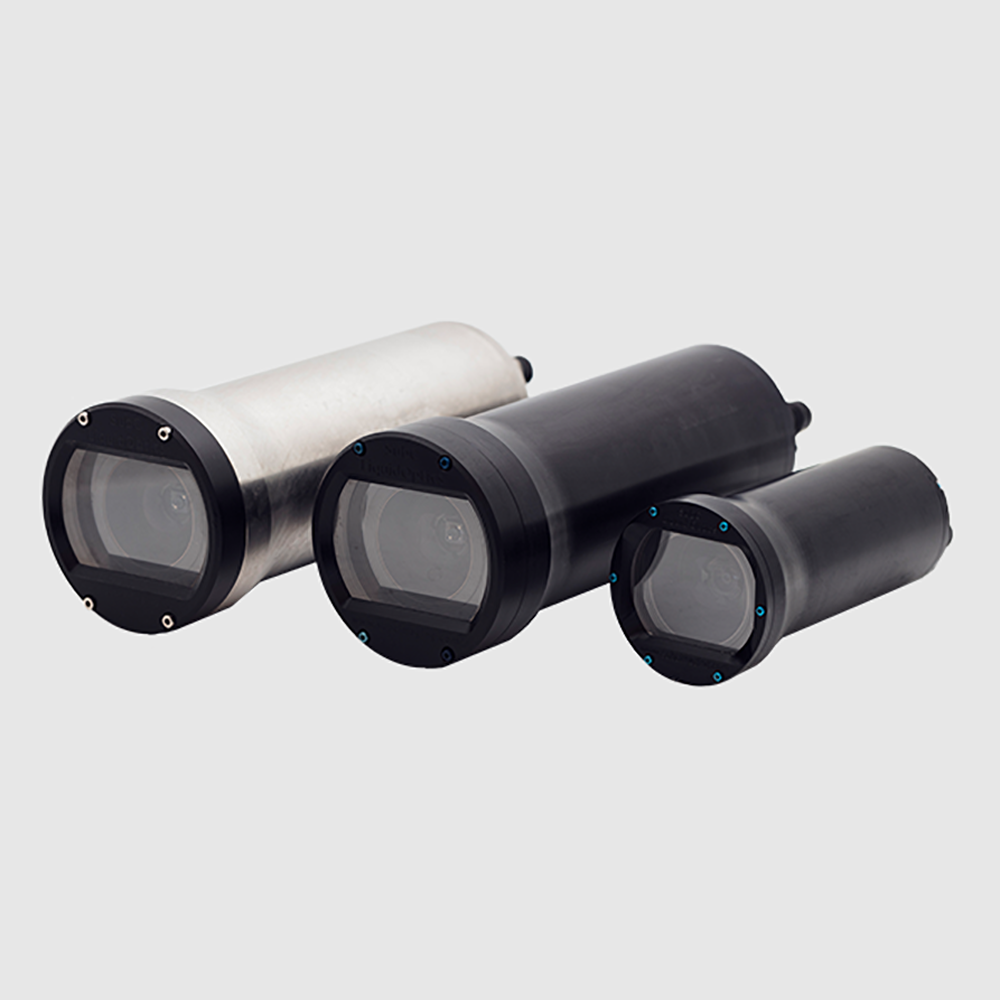Top Features to Look for in an ROV Camera
With live underwater surveys and inspections, your ROV camera is one of the most critical components in your setup. For original equipment manufacturers (OEMs) and professionals in industries like offshore energy, marine research, and infrastructure inspections, having the right camera ensures efficient operations, accurate data collection, and seamless workflows.
But not all ROV cameras are created equal. To help you make an informed choice, we’ve broken down five essential features that should guide your selection. These features go beyond basic functionality, addressing the real-world challenges of live surveys and inspections to ensure you have the tools needed for success.
Why Is Selecting the Right ROV Camera So Important?
The success of your underwater operation hinges on having the right tools for the job. Among these tools, the ROV camera plays a central role in ensuring accurate, actionable data is captured in real time. Whether you're inspecting subsea pipelines, conducting environmental assessments, or evaluating offshore infrastructure, the clarity and reliability of your visuals directly impact the efficiency and outcomes of your mission.
For operators, choosing the right ROV camera means fewer delays, more precise data collection, and the ability to adapt quickly to underwater challenges. The right features can improve the quality of your inspection, optimize your workflow, and minimize operational downtime. With a camera that meets the demands of your specific application, operators can ensure they are collecting the most relevant and accurate data possible, without the added burden of technical issues or time-consuming troubleshooting.
For OEMs and system integrators, selecting the right ROV camera is not only about improving performance but also about staying ahead of the curve. By offering cameras with advanced features, superior imaging, and seamless integration, OEMs can position themselves as leaders in the industry, providing best-in-class, innovative solutions that set them apart from competitors. Choosing a high-performance camera gives OEMs the opportunity to deliver cutting-edge technology to end users, ensuring their systems are at the forefront of operational efficiency and effectiveness. This forward-thinking approach signals to customers that the OEM is committed to delivering the latest and most reliable technology, ultimately enhancing the value of their products and increasing their appeal in a competitive market.
Must-Have ROV Camera Features
1. Easy Integration with ROV
When selecting an ROV camera, integration is a key feature to consider. The easier the camera integrates into your ROV platform, the less time is spent on setup and troubleshooting, and more time can be devoted to actual inspections. In both live surveys and routine operations, a smooth integration process minimizes downtime and enhances overall workflow. Cameras that are designed with integration in mind eliminate the complexity of equipment setup and simplify operation, leading to more efficient inspections.
A camera that integrates well with your ROV platform should include hardware compatibility with standardized ports, ensuring it can easily connect to a range of systems without requiring custom modifications. Additionally, compatibility with existing software systems is just as important. A unified software platform enables operators to control all essential functions—such as the camera, lights, lasers, DVR, and data overlays—through a single interface, streamlining operations and reducing the risk of errors. For instance, the Rayfin Micro offers this consolidated approach, allowing operators to manage all their imaging systems with one easy-to-use platform, reducing operator workload and the risk of errors.
This integration not only speeds up the setup process but also ensures that operators can focus more on their core tasks, minimizing With fewer systems to manage, they can monitor live data and visuals without getting bogged down by technical issues. A plug-and-play setup also speeds up production timelines, reducing the time spent configuring equipment before each mission.
2. Imaging Quality
When selecting an ROV camera, image quality is one of the most essential factors to consider. Whether you're performing live surveys or inspections, clarity and sharpness are non-negotiable. Low-quality images can result in missed details, inaccurate assessments, and ultimately costly delays. For operators and engineers who rely on real-time visuals, a camera that delivers exceptional imaging ensures data accuracy and efficiency.
The best ROV cameras incorporate high-resolution sensors and advanced optics to produce sharp, clear images even in challenging underwater conditions. Look for a camera with these features so that you capture the detail necessary for precise inspections. A camera with advanced technology like water-corrected optics can be crucial for minimizing distortion and ensuring accurate visuals.
One example of this advanced technology is SubC Imaging’s LiquidOptics™, which is used in all of their Rayfin cameras including the Rayfin Micro. LiquidOptics™ offers water-corrected, sapphire lenses that correct optical distortions caused by the water environment. This system minimizes chromatic aberration and produces exceptional color accuracy, allowing operators to view realistic, distortion-free images. LiquidOptics™ also enhances the field of view and sharpness, which is especially important when operating in low-visibility conditions or inspecting complex structures.
With high-quality optics and powerful sensors, such cameras can capture images with clarity and sharpness even in challenging underwater environments. These features are especially important for applications like offshore pipeline inspections, where identifying small cracks or structural issues is crucial. Cameras with high-resolution sensors—ensure that every detail is visible, which minimizes the need for repeat surveys or follow-up inspections. Read more about LiquidOptics now.
3. Low-latency & Enhanced Live Imaging
(Left) Without image enhancement. (Right) With SubC’s Imaging’s live real-time image enhancement.
When selecting an ROV camera, one of the most critical features to look for is the ability to provide live video with minimal latency. Cameras that offer near-zero latency ensure that operators see real-time visuals without noticeable delay, making it easier to react quickly and navigate underwater tasks. These features are especially important in environments where conditions can change rapidly, such as in low-visibility waters or when inspecting intricate structures.
Additionally, look for a camera that includes built-in image enhancement technology. This feature improves video clarity by optimizing the image in real-time, especially when visibility is compromised by environmental factors like murky water or low light. A camera with enhanced image quality ensures that operators can still make informed decisions, even in less-than-ideal conditions. Another valuable feature is a focus range that can eliminate interference from foreground debris, such as particles or marine growth, which can often obstruct the view and cause confusion.
For example, the Rayfin Micro offers near-zero latency, delivering real-time video without noticeable delay. Its advanced live image enhancement features ensure clear visuals even in challenging conditions, such as turbid waters or low light. This allows operators to make immediate decisions and continue operations without interruptions, making it ideal for precise inspections of subsea structures, pipelines, or environmental surveys.
4. Lightweight Design
A heavy camera can place unnecessary strain on an ROV's propulsion system, limiting its maneuverability and operational range. For operators, especially those using observation-class ROVs that prioritize agility and compactness, a lightweight camera is essential. A camera with a smaller form factor not only improves the ROV's ability to navigate tight spaces but also ensures that additional tools, such as manipulators, lights, or sensors, can be easily paired without exceeding the payload limits.
In addition to enhancing maneuverability, a lightweight design helps extend the operational time of the ROV. With less strain on the power system, the ROV can operate longer without the risk of overloading its battery or propulsion system.
For example, the Rayfin Micro weighs less than 500g in water, making it one of the lightest cameras in its class. This compact design allows it to integrate seamlessly into observation-class ROVs, enhancing their overall performance. Operators benefit from increased maneuverability, allowing them to navigate tight spaces and conduct thorough inspections in confined environments, such as inside shipwrecks or along complex subsea infrastructure.
5. Real-Time Media and Data Transfer
The ability to transfer media and data in real-time is a key feature to consider when selecting an ROV camera. Cameras with only internal storage can create significant bottlenecks, requiring operators to spend hours or even days powering on ROVs, downloading files, and manually sorting data. This process wastes valuable time and also delays decision-making and reduces overall efficiency.
Instead, look for a camera that offers real-time transfer of media and data directly to topside systems. The ability to access high-resolution images and video immediately—complete with overlays and annotations—can dramatically improve operational workflows. Additionally, a system that organizes files into a pre-configured folder structure and embeds critical EXIF metadata, such as GPS location, date, and time, simplifies post-mission analysis and reporting.
The Rayfin Micro is an example of an ROV camera designed to do exactly this. It seamlessly transfers media and data in real-time, allowing operators to review images and video as they are captured, all while automatically embedding essential metadata like GPS location and time. This capability streamlines workflows and reduces the time spent waiting for data to be downloaded and organized, freeing up operators to focus on the inspection or survey itself.
With this setup, your team can make decisions on the spot, saving time and ensuring that critical insights are available immediately for analysis and reporting. This feature is especially beneficial for larger projects, where quick data accessibility can significantly shorten project timelines.
Conclusion
Selecting the right ROV camera isn’t just about checking off features—it’s about understanding how those features impact your operations in the real world. The ideal camera should seamlessly integrate with your ROV, offer exceptional imaging quality, and provide low-latency live video for real-time decision-making. Plus, lightweight designs and real-time media transfer capabilities are essential for optimizing maneuverability and accelerating workflows, making inspections more efficient and less prone to delays.
By choosing an ROV camera with these critical features you’ll ensure that your underwater operations are equipped with the best tools available for success. Whether you're an operator, OEM, or system integrator, investing in advanced camera technology will improve the quality of your inspections, increase operational efficiency, and position you at the forefront of innovation in the industry.








